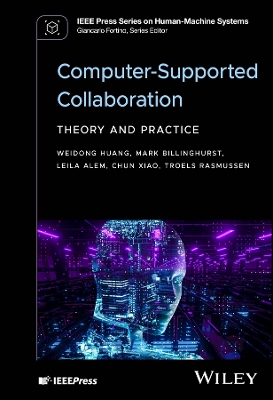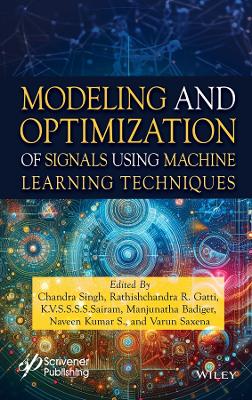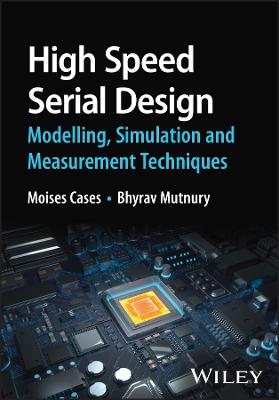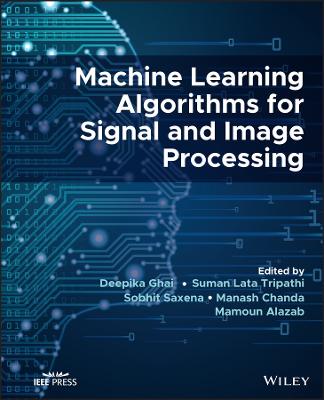Computer-Supported Collaboration
 -15%
portes grátis
-15%
portes grátis
Computer-Supported Collaboration
Theory and Practice
Huang, Weidong; Billinghurst, Mark; Rasmussen, Troels; Alem, Leila; Xiao, Chun
John Wiley & Sons Inc
05/2024
384
Dura
Inglês
9781119719762
15 a 20 dias
666
Acknowledgments xv
1 Remote Collaboration on Physical Tasks 1
1.1 Introduction 1
1.2 Remote Collaboration in Perspective 2
1.3 Book Audience 5
2 Communication Models for Remote Guidance 7
2.1 Introduction 7
2.2 Overview of Communication Models 9
2.2.1 Linear Communication Models 12
2.2.2 Nonlinear Communication Models 13
2.2.3 Summary 18
2.3 Applying Communication Models 19
2.4 Communication Behaviors in AR Conferencing 22
2.5 A Communication Model for AR 32
2.6 Conclusions 34
3 Communication Cues in Augmented Remote Collaboration 41
3.1 Introduction 41
3.2 The Research Landscape -- Trends Over Time 43
3.3 Communication in Augmented Remote Collaboration 48
3.4 Challenges 65
3.5 Future Directions 67
3.6 Conclusion 68
4 Communication Cues for Remote Guidance 81
4.1 Introduction 81
4.2 Explicit Communication Cues 84
4.3 Implicit Communication Cues 100
4.4 Challenges and Future Directions 104
4.5 Conclusion 105
5 Communicating Eye Gaze Cues in Remote Collaboration on Physical Tasks 115
5.1 Introduction 115
5.2 The Changing Research Landscape -- Research Topic Trends and Teams over the Past Two Decades 117
5.3 Categorization of System Setup Based on the Screened Publications 122
5.4 Gaze Visualization 127
5.5 Functionality of Tracked Gaze in Remote Guidance on Physical Tasks 130
5.6 Challenges of Utilizing Eye Tracking in Remote Collaboration 132
5.7 Future Directions 133
5.8 Conclusion 135
6 Evaluating Augmented Reality Remote Guidance Systems 143
6.1 Introduction 143
6.2 Evaluation Methods for Collaborative AR 148
6.3 Case Studies From Example Systems 152
6.4 Guidelines 163
6.5 Directions for Research 164
6.6 Conclusion 166
7 Supporting Remote Hand Gestures over the Workspace Video 173
7.1 Introduction 173
7.2 RelatedWork 176
7.3 HandsOnVideo 177
7.4 User Testing 183
7.5 Discussion 189
7.6 Conclusion and Future work 190
8 Gesturing in the Air in Supporting Full Mobility 195
8.1 Introduction 195
8.2 Background 197
8.3 System Overview 200
8.4 Usability Study 203
8.5 Discussion 209
8.6 Concluding Remarks and Future Work 210
9 Sharing Hand Gesture and Sketch Cues with a Touch User Interface 215
9.1 Introduction 215
9.2 RelatedWork 217
9.3 Methods and Materials 220
9.4 Results 228
9.5 Discussion 234
9.6 Limitations 237
9.7 Conclusion 238
10 Augmenting Hand Gestures in 3D Mixed Reality 243
10.1 Introduction 243
10.2 RelatedWork 245
10.3 System Overview 248
10.4 Evaluation 253
10.5 A Comparison of User Ratings between HandsInAir and HandsIn3D 260
10.6 Conclusion and Future Work 262
11 Supporting Tailorability to Meet Individual Task Needs 269
11.1 Introduction 269
11.2 Component-Based Design of RemoteAssistKit 271
11.3 Identifying Tailorable Aspects of Remote Assistance 276
11.4 How Users Tailor Remote Assistance 281
11.5 The Importance of Nonverbal Guidance Depends on the Knowledge Relationship 287
11.6 Sharing of Machine Sounds Is Important for Remote Troubleshooting 288
11.7 High-Resolution Views Are Important for Remote Product Quality Optimization 289
11.8 The Manufacturing Context Poses a Challenge for Creating 3D Reconstructions with Depth Cameras 290
11.9 Multiple Cameras SupportWorkspace Awareness in Large Industrial Task Spaces 290
11.10 Concluding Remarks 293
12 Supporting Workspace Awareness with Augmented Reality-Based Multi-camera Visualization and Tracking 299
12.1 Introduction 299
12.2 Augmented Reality for Supporting Awareness During Multi-camera Remote Assistance 302
12.3 Future Research on Multi-camera Remote Assistance 314
12.4 Discussion of 2D vs. 3DWorkspace Information 320
12.5 Concluding Remarks 321
13 Industrial Applications, Current Challenges, and Future Directions 327
13.1 Introduction 327
13.2 Remote Guidance Systems 327
13.3 Technical, Ethical, and Research Challenges and Future Directions 331
13.4 Conclusion 338
References 339
Index 343
Acknowledgments xv
1 Remote Collaboration on Physical Tasks 1
1.1 Introduction 1
1.2 Remote Collaboration in Perspective 2
1.3 Book Audience 5
2 Communication Models for Remote Guidance 7
2.1 Introduction 7
2.2 Overview of Communication Models 9
2.2.1 Linear Communication Models 12
2.2.2 Nonlinear Communication Models 13
2.2.3 Summary 18
2.3 Applying Communication Models 19
2.4 Communication Behaviors in AR Conferencing 22
2.5 A Communication Model for AR 32
2.6 Conclusions 34
3 Communication Cues in Augmented Remote Collaboration 41
3.1 Introduction 41
3.2 The Research Landscape -- Trends Over Time 43
3.3 Communication in Augmented Remote Collaboration 48
3.4 Challenges 65
3.5 Future Directions 67
3.6 Conclusion 68
4 Communication Cues for Remote Guidance 81
4.1 Introduction 81
4.2 Explicit Communication Cues 84
4.3 Implicit Communication Cues 100
4.4 Challenges and Future Directions 104
4.5 Conclusion 105
5 Communicating Eye Gaze Cues in Remote Collaboration on Physical Tasks 115
5.1 Introduction 115
5.2 The Changing Research Landscape -- Research Topic Trends and Teams over the Past Two Decades 117
5.3 Categorization of System Setup Based on the Screened Publications 122
5.4 Gaze Visualization 127
5.5 Functionality of Tracked Gaze in Remote Guidance on Physical Tasks 130
5.6 Challenges of Utilizing Eye Tracking in Remote Collaboration 132
5.7 Future Directions 133
5.8 Conclusion 135
6 Evaluating Augmented Reality Remote Guidance Systems 143
6.1 Introduction 143
6.2 Evaluation Methods for Collaborative AR 148
6.3 Case Studies From Example Systems 152
6.4 Guidelines 163
6.5 Directions for Research 164
6.6 Conclusion 166
7 Supporting Remote Hand Gestures over the Workspace Video 173
7.1 Introduction 173
7.2 RelatedWork 176
7.3 HandsOnVideo 177
7.4 User Testing 183
7.5 Discussion 189
7.6 Conclusion and Future work 190
8 Gesturing in the Air in Supporting Full Mobility 195
8.1 Introduction 195
8.2 Background 197
8.3 System Overview 200
8.4 Usability Study 203
8.5 Discussion 209
8.6 Concluding Remarks and Future Work 210
9 Sharing Hand Gesture and Sketch Cues with a Touch User Interface 215
9.1 Introduction 215
9.2 RelatedWork 217
9.3 Methods and Materials 220
9.4 Results 228
9.5 Discussion 234
9.6 Limitations 237
9.7 Conclusion 238
10 Augmenting Hand Gestures in 3D Mixed Reality 243
10.1 Introduction 243
10.2 RelatedWork 245
10.3 System Overview 248
10.4 Evaluation 253
10.5 A Comparison of User Ratings between HandsInAir and HandsIn3D 260
10.6 Conclusion and Future Work 262
11 Supporting Tailorability to Meet Individual Task Needs 269
11.1 Introduction 269
11.2 Component-Based Design of RemoteAssistKit 271
11.3 Identifying Tailorable Aspects of Remote Assistance 276
11.4 How Users Tailor Remote Assistance 281
11.5 The Importance of Nonverbal Guidance Depends on the Knowledge Relationship 287
11.6 Sharing of Machine Sounds Is Important for Remote Troubleshooting 288
11.7 High-Resolution Views Are Important for Remote Product Quality Optimization 289
11.8 The Manufacturing Context Poses a Challenge for Creating 3D Reconstructions with Depth Cameras 290
11.9 Multiple Cameras SupportWorkspace Awareness in Large Industrial Task Spaces 290
11.10 Concluding Remarks 293
12 Supporting Workspace Awareness with Augmented Reality-Based Multi-camera Visualization and Tracking 299
12.1 Introduction 299
12.2 Augmented Reality for Supporting Awareness During Multi-camera Remote Assistance 302
12.3 Future Research on Multi-camera Remote Assistance 314
12.4 Discussion of 2D vs. 3DWorkspace Information 320
12.5 Concluding Remarks 321
13 Industrial Applications, Current Challenges, and Future Directions 327
13.1 Introduction 327
13.2 Remote Guidance Systems 327
13.3 Technical, Ethical, and Research Challenges and Future Directions 331
13.4 Conclusion 338
References 339
Index 343







